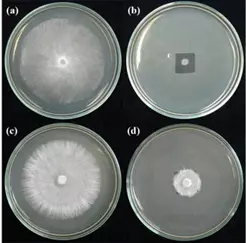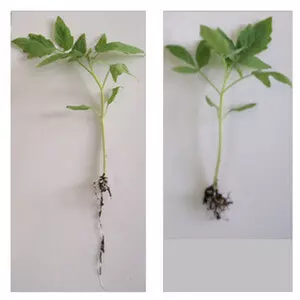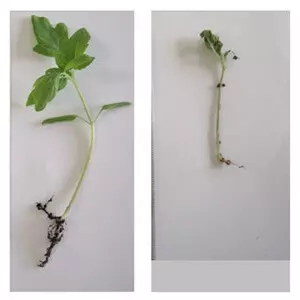Hot Products


STREPTOMYCES ROCHEI
Improves soil health and fertility by enhancing nutrient cycling
STREPTOMYCES ROCHEI,Improves soil health and fertility by enhancing nutrient cycling
Streptomyces rochei is a soil-dwelling bacterium that produces an array of secondary metabolites with potential applications in plant pathogen control. This streptomyces fungicide is widely recognized for its ability to produce antibiotics, enzymes, and volatile organic compounds that have been shown to inhibit fungal pathogens growth and promote plant growth stimulation. The bacterium also produce chitinase, which diminishes chitin in fungal cell walls, making it a potential biocontrol agent against a variety of fungal pathogens, such as rice blast. If you are looking for Streptomyces fungicide products, Novobac is your reliable source for high-quality and effective microbial solutions.
hiddenValue
USE FOR
MODE OF ACTION
TECHNICAL
BENEFIT
INSTRUCTION
DOCS
-
USE FOR
Target Disease
• Fusarium oxysporum • Rhizoctonia solani • Botrytis cinerea • Sclerotinia sclerotiorum • Phytophthora capsici • Alternaria brassicicola Antagonistic Activity
 It produces a range of secondary metabolites that have antifungal and antibacterial properties. These compounds inhibit growth and reproduction by disrupting cell membranes or interfering with metabolic processes in the target organisms.
It produces a range of secondary metabolites that have antifungal and antibacterial properties. These compounds inhibit growth and reproduction by disrupting cell membranes or interfering with metabolic processes in the target organisms.(a) Pythium aphanidermatum control
(b) Streptomyces rochei treated 1 day
(c) Sclerotium rolfsii control
(d) Streptomyces rochei treated 3 day
-
MODE OF ACTION
- Produces various antibiotics, such as "streptothricin", which targets bacterial pathogens by inhibiting protein synthesis. It also produces antifungal compounds that disrupt fungal cell walls and membrane integrity.
- Trigger a plant’s natural defense mechanisms, resulting in enhanced resistance against a range of pathogens. Induced Systemic Resistance (ISR) primes plants to respond more robustly to future attacks.
- Secretes enzymes such as "chitinases" and "glucanases", which break down the cell walls of fungi. This weakens and destroys fungal pathogens that threaten crops.
- Colonizes plant roots or the rhizosphere, effectively outcompeting harmful pathogens by consuming available nutrients and occupying space, thus reducing the pathogens' chances of survival and proliferation.
-
TECHNICAL
AVAILABLE SPECIFICATION
Bacteria count 2* 10^9 CFU/g
FORMULATION TYPE
Wettable Powder
PACKAGING
1 kg or 25 kg per bag
SHELF LIFE AND STORAGE
A shelf life of 18 months stored in a cool, dry location, away from direct sunlight and moisture to maintain its effectiveness. For safety reasons, please ensure that the product is kept out of reach of children at all times.
-
BENEFIT
Benefit
- Increases plant growth and yield
- Induces systemic resistance, making plants more resistant to pathogens
- Generates antibiotics and enzymes that prevent fungal infections.
- Enhances root development
- Improves nutrient uptake by the plant
- Stimulates germination and seedling growth
- Helps plants tolerate stress conditions such as drought and high salt levels
- Minimises the necessity of chemical fertilisers and insecticides
- Improves soil health by promoting beneficial microorganisms
See different by youself

Control (right) and Treated (left) Tomato Plants

F. Oxysporum Infected (right) and S. Rochei Treated (left) Tomato Plants
-
INSTRUCTION
Application Rate
- Apply 1 kg per hectare, Mix with water to create a suspension at rate of 10 grams of powder per liter of water.
- Apply the suspension by spray, soil drench, irrigation. For optimal result, apply the suspension during the early stages of crop development or before symptoms of disease appear. The best times to apply are early morning or late afternoon, because when heat is cooler and the evaporation rate is lower.
- Reapply at interval of 4-8 weeks, depending on the severity of the disease in the field. In areas with high disease pressure, other control measures may need to be employed in addition to plant fungus spray.
How does Streptomyces rochei help the soil?
It is known to be beneficial to soil health and fertility, acting as a natural biological Streptomyces fungicide products that’s also safe for the environment, humans, and non-target microbes. Here are some of the forms it benefits the soil:
- Nutrient cycling: Aids in the breakdown of soil organic matter, thereby increasing the accessibility of nutrients to plants.
- Disease suppression: Produces antifungal compounds that help protect plants against fungal pathogens. This can reduce the need for chemical pesticides that can harm beneficial soil microorganisms.
- Soil structure: It produces enzymes that help break down plant debris in the soil, improving soil structure and water retention. This can lead to better crop yields and healthier plants.
- Biocontrol: Competes with other microorganisms for resources, reducing the population of harmful bacteria and fungi that can cause plant diseases.
Can I use Streptomyces rochei with other soil bacteria together?
The plant fungus spray can be synergistic effect when work well with other soil bacteria, following soil bacteria are recommended:
- Bacillus subtilis: This bacterium has been shown to promote plant growth, improve nutrient uptake, and enhance disease resistance in plants. It can further improve the biocontrol efficacy against rice blast.
- Trichoderma harzianum: Trichoderma fungi are known to produce antimicrobial compounds that can suppress fungal pathogens. Combing Trichoderma improves the efficacy of rice blast control, leading to better control of the disease and enhanced plant growth.
- Pseudomonas spp.: Pseudomonas bacteria can produce secondary metabolites that can inhibit fungal pathogens. Using Pseudomonas in combination with Streptomyces fungicide can provide a broad-spectrum protection against diseases.
- Mycorrhizal fungi: These fungi form mutualistic associations with plant roots and can improve nutrient uptake and water absorption by plants.
-
DOCS


Product Spotlight
CONTACT US

Office 38/1502, No 660,Hanguang Rt., Changsha City, Hunan, China






